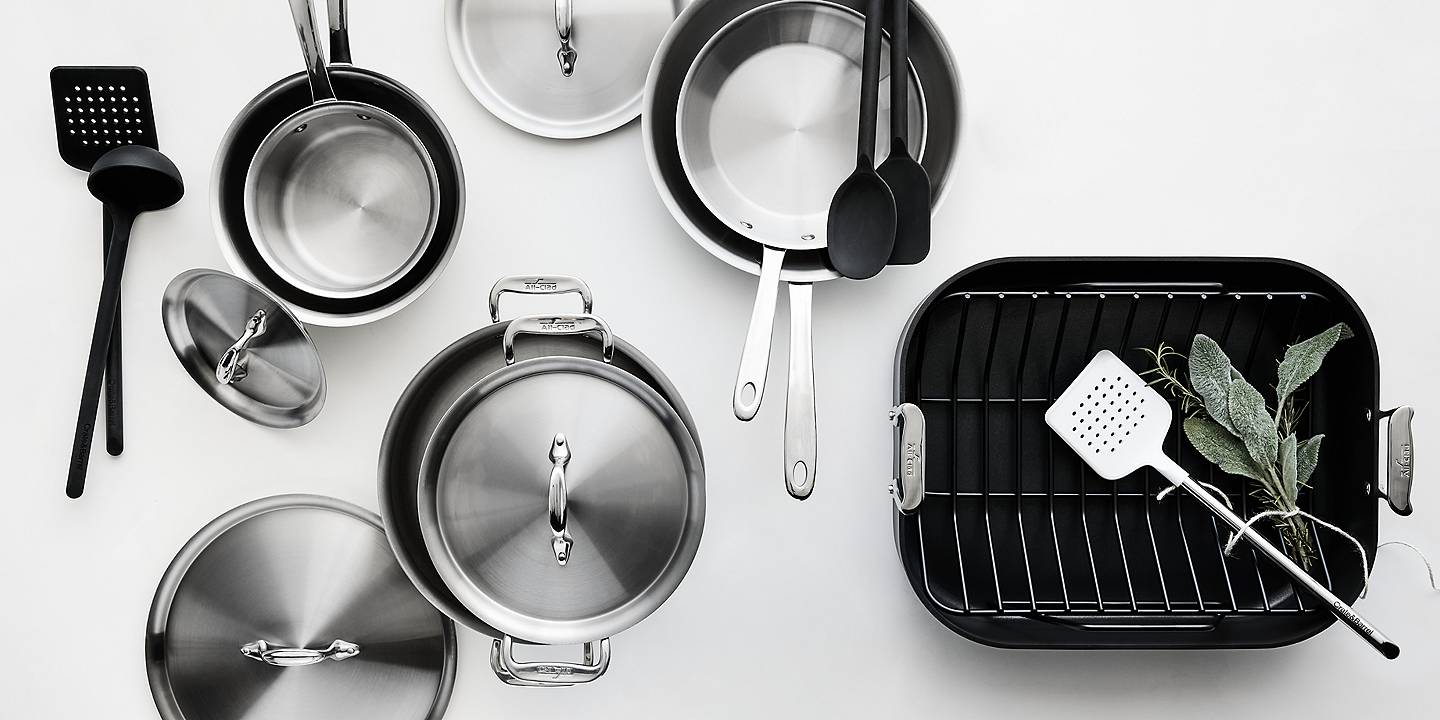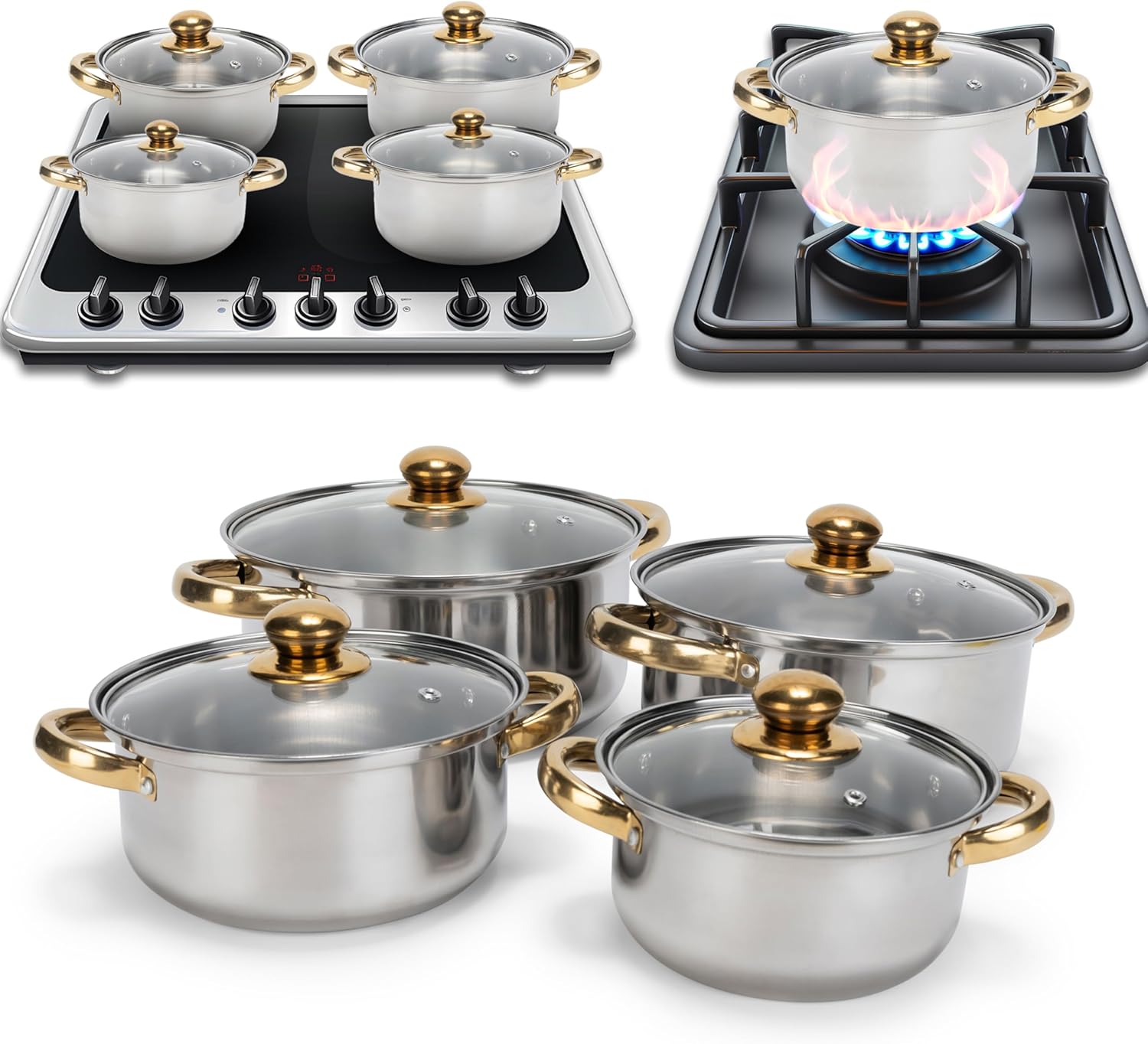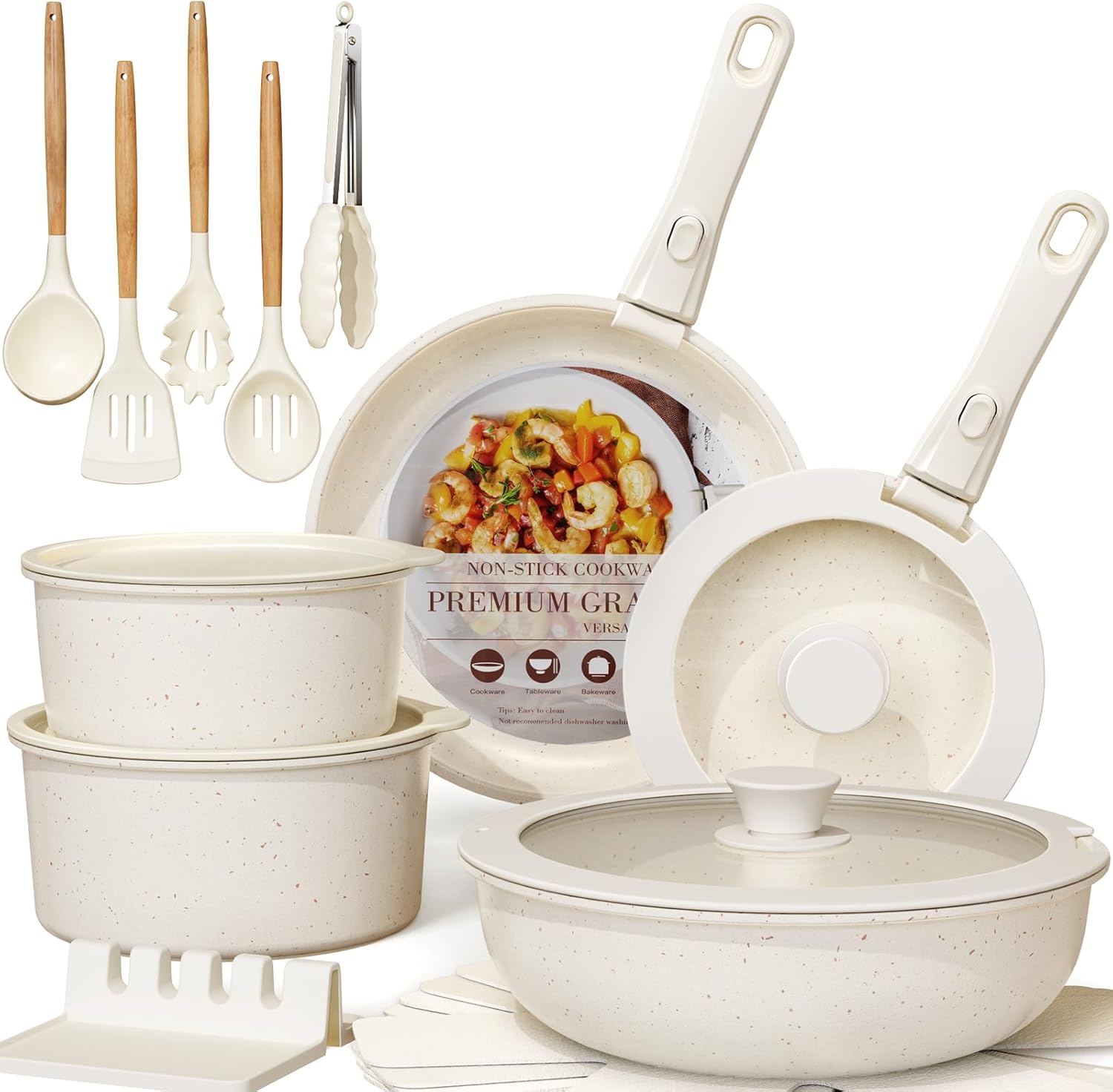Choose cooking pans based on material and compatibility with your cooktop. Consider pan size and depth for your cooking needs.
How to Choose Cooking Pans:Selecting the right cooking pan is essential for any home chef, aiming to create delicious meals with ease and efficiency. Your cookware influences everything from food flavor to how well your recipes turn out. The market is saturated with options, from non-stick surfaces to durable cast iron, and the choices can be overwhelming.
Key factors include thermal conductivity, maintenance, durability, and whether you’re cooking on gas, induction, or electric ranges. A well-chosen pan not only improves your cooking experience but also ensures that your food cooks evenly and tastes great. Start with understanding the core of your cooking style and the types of dishes you prepare most often to make an informed decision that suits your culinary journey.
Introduction To Cooking Pans
Choosing the right cooking pans is vital. It affects food quality and kitchen efficiency. Different dishes need different pans. Understand pan types to make informed choices.
The Role In Your Kitchen
Cooking pans are essential tools. They provide the surface for food preparation. The right pan can enhance flavors and ease cooking tasks. Pans come in various sizes, shapes, and materials. This variety suits a range of cooking methods. From searing steaks to simmering sauces, pans play a key role.
- Searing: Heavy pans retain heat for a perfect crust.
- Simmering: Saucepans control liquid temperatures well.
- Baking: Oven-safe pans enable cake and pastry making.
Varieties Available
Many pan types are available. Each type serves a specific purpose. Material affects cooking performance. Non-stick, stainless steel, and cast iron are popular choices. Non-stick pans suit delicate foods. Stainless steel pans are versatile. Cast iron pans are great for high-heat cooking.
| Type | Use | Material |
|---|---|---|
| Non-stick | Eggs, pancakes | Teflon, Ceramic |
| Stainless Steel | Meats, vegetables | Steel, Aluminum core |
| Cast Iron | Steaks, stir-fry | Iron |
Material Matters
Choosing the right cooking pans is crucial for any kitchen. The material of a pan affects heat conduction, durability, and maintenance. Let’s explore popular materials to find the best fit for your cooking needs.
Stainless Steel
- Durable and resistant to scratches.
- Excellent for browning and searing.
- Often features aluminum or copper cores for better heat distribution.
- Easy to clean and dishwasher-safe.
Cast Iron
- Perfect for high heat cooking and oven use.
- Retains heat efficiently for even cooking.
- Develops a natural non-stick surface over time.
- Requires seasoning and careful maintenance.
Non-stick
- Ideal for low-fat cooking with minimal oil.
- Ensures easy food release and simple cleanup.
- Not suitable for high-heat cooking.
- Scratch-resistant coatings improve longevity.
Copper
- Provides excellent thermal conductivity for precise cooking.
- Reacts quickly to temperature changes.
- Usually lined with stainless steel for food safety.
- Requires polishing to maintain its beautiful shine.
Considering Cooktop Compatibility
Considering Cooktop Compatibility is essential when selecting cooking pans. Your choice can impact cooking efficiency and pan longevity. Different cooktops require specific pan types. This ensures optimal heat distribution and prevents damage.
Induction
Induction cooktops need pans with magnetic bottoms. Look for iron or steel pans. Check with a magnet. If it sticks, the pan works on induction. Aluminum or copper pans won’t work unless they have a magnetic layer.
Gas
Gas stoves are versatile. They work with most pan materials. Choose heavy-bottomed pans for even heating. Thin pans can warp or heat unevenly on gas stoves.
Electric
Electric stoves require flat-bottomed pans for proper contact. Glass or ceramic stovetops need scratch-resistant pans. Avoid cast iron that can damage the surface.
- Induction: Magnetic materials like cast iron or some stainless steel.
- Gas: Wide range, including aluminum, stainless steel, and copper.
- Electric: Flat-bottomed pans, typically stainless steel or aluminum.
Size And Shape
Choosing the right cooking pan is crucial for any kitchen. The size and shape of a pan can affect the cooking process and the final dish. Pans come in various sizes and shapes to suit different cooking needs. It’s important to match the pan to the dish you are preparing. You also need to consider how the pan will fit in your kitchen storage. Let’s explore these aspects in detail.
Matching Pan To Dish
Using the correct pan size and shape enhances food flavor and texture. A small pan for a big meal may cause uneven cooking. A big pan for a small meal wastes energy. Match the pan to the recipe for best results. Here are some common pairings:
- Saucepans – Ideal for sauces and boiling water.
- Skillets – Perfect for frying and sautéing.
- Stockpots – Used for soups and stock.
- Baking pans – Come in shapes like round, square, and rectangle for various baked goods.
Storage Considerations
Think about your kitchen space before buying pans. Large or awkwardly shaped pans need more room. Nesting pans save space. Hanging pans can be a smart option. Here are storage tips:
- Measure shelf and cabinet dimensions.
- Consider pan sets that nest together.
- Look for pans with removable handles.
- Use wall racks or ceiling hangers for easy access.
Weight And Handle Comfort
Choosing the right cooking pan is crucial for home chefs. Weight and handle comfort matter a lot. A pan should feel good in your hands. It should also last long in the kitchen. Let’s dive into how to find that perfect balance.
Balancing Weight And Durability
A heavy pan means even heating. But it should not strain your wrists. Cast iron pans are durable and heavy. Stainless steel offers a lighter option. Look for a pan that provides both heft and ease of use.
- Cast iron: Great for heat retention, heavy.
- Stainless steel: Lighter, durable, less heat retention.
- Aluminum: Lightweight, heats quickly, less durable.
Ergonomic Features
The right handle makes cooking safer and easier. Handles should stay cool. They should also offer a secure grip. Silicone and rubber handles provide comfort. They also prevent slips. Make sure handles are oven-safe if needed.
| Material | Comfort | Oven-Safe |
|---|---|---|
| Silicone | High | Usually |
| Rubber | High | Sometimes |
| Metal | Varies | Yes |
Heat Conductivity And Retention
Understanding heat conductivity and retention is crucial when choosing cooking pans. These factors affect cooking performance and energy efficiency. Let’s explore why they matter and compare different materials.
Why It Matters
Heat conductivity determines how quickly a pan heats up.
Heat retention indicates how long a pan stays hot.
Good conductivity means even cooking without hot spots.
Good retention keeps food warm for serving.
Material Performance Comparison
| Material | Conductivity | Retention |
|---|---|---|
| Copper | Excellent | Low |
| Aluminum | Very Good | Medium |
| Cast Iron | Good | High |
| Stainless Steel | Moderate | Medium |
| Ceramic | Varies | Medium |
- Copper pans heat up fast but cool quickly. Ideal for quick meals.
- Aluminum offers rapid heating with better heat retention than copper.
- Cast iron heats slowly but retains heat well. Perfect for searing.
- Stainless steel has moderate performance. It’s durable.
- Ceramic pans have varying qualities. They’re eco-friendly.
Maintenance And Durability
Maintenance and Durability are key when choosing cooking pans. You want pans that last and stay clean with ease. Look for pans that resist scratches and damages. Proper care keeps them like new for years. Let’s explore how to keep your pans in top shape.
Cleaning Tips
- Use warm soapy water for daily cleaning.
- Avoid harsh scrubbers to prevent scratches.
- Dry pans immediately to stop rust.
- For stainless steel, use vinegar to remove spots.
- Non-stick pans need a soft sponge.
Longevity Tips
- Use pans on correct heat settings to avoid warping.
- Store pans with care; avoid stacking that scratches.
- Season cast iron regularly to maintain its surface.
- Replace pans when coating starts to chip.
- Follow manufacturer guidelines for the best results.
| Pan Type | Care Tip | Life Expectancy |
|---|---|---|
| Non-stick | Soft sponge cleaning | 1-5 years |
| Stainless Steel | Vinegar for spots | 5-10 years |
| Cast Iron | Regular seasoning | Decades |

Credit: m.youtube.com
Price Vs. Quality
When shopping for cooking pans, consider the balance between price and quality. It’s tempting to grab the cheapest option off the shelf. Yet, higher-priced pans could offer better cooking results and last longer. Smart choices in the kitchen begin with understanding when to invest more and where you can cut costs without sacrificing performance.
Investing Wisely
Investing in high-quality pans means fewer replacements over time. Look for materials that distribute heat evenly, such as stainless steel or cast iron. These materials improve cooking and are often more durable. A good pan can last years, even decades. Consider this a long-term investment for your kitchen.
When To Splurge And Save
- Splurge: On pans you use daily. A non-stick skillet or a sauté pan is worth the extra cost.
- Save: On specialty items. A paella pan or a fish poacher, used less often, need not break the bank.
Balance is key. Mix high-end pieces with budget-friendly options. This approach ensures a well-equipped kitchen without overspending.
Final Thoughts
Choosing the right cooking pan is key to great meals. Let’s wrap up.
Recap Of Key Points
- Material matters: Each has its benefits and uses.
- Size and shape fit different cooking needs.
- Handle comfort is crucial for safe cooking.
- Easy to clean pans save time and effort.
Encouragement To Explore
Don’t be afraid to try new pans. Each one can unlock new flavors and dishes. Your perfect pan awaits!

Credit: m.youtube.com

Credit: www.crateandbarrel.com
Frequently Asked Questions
How Do I Know What Cookware To Buy?
To choose the right cookware, consider your cooking habits, preferred materials like stainless steel or non-stick, and budget. Ensure compatibility with your stove type. Check reviews for durability and performance insights.
What Type Of Pan Is Best For Cooking?
The best type of pan for cooking is often a non-stick or cast iron skillet, offering easy cleaning and consistent heat distribution.
What Factors Should You Consider When Choosing Kitchen Pans?
Consider material for heat conduction, weight for handling, pan size for meal portions, non-stick features for easy cleaning, and compatibility with your stove type.
What Is The Best Material For Everyday Cookware?
Stainless steel stands out as the best material for everyday cookware due to its durability, easy maintenance, and versatility in cooking various dishes. It’s non-reactive, ensuring flavors remain pure, and suits all heat sources, making it ideal for any kitchen.
Conclusion
Choosing the right cooking pans is essential for any kitchen enthusiast. It influences the quality of your dishes and your cooking experience. Remember, factors like material, size, and compatibility with your stove type play a crucial role. With the tips shared, you’re now equipped to make an informed decision.
Happy cooking!





Leave a Reply